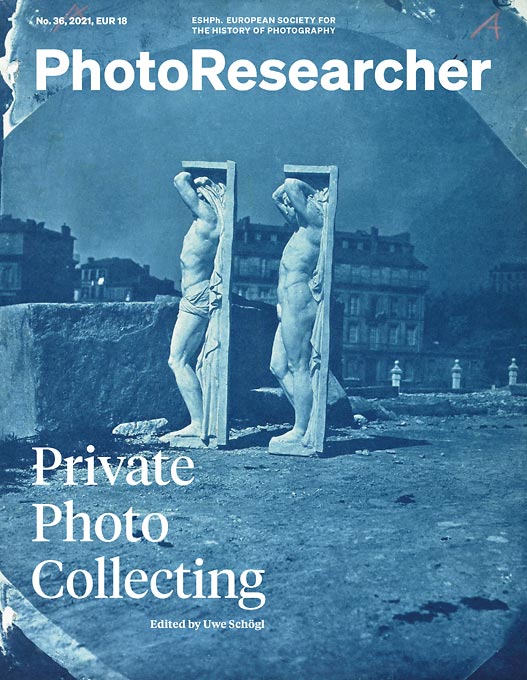Uwe Schögl is president of The European Society for the History of Photography, ESHPh, and editor of its journal, PhotoResearcher. I started out by asking him when, how and why the society was involved and who was involved at the time.
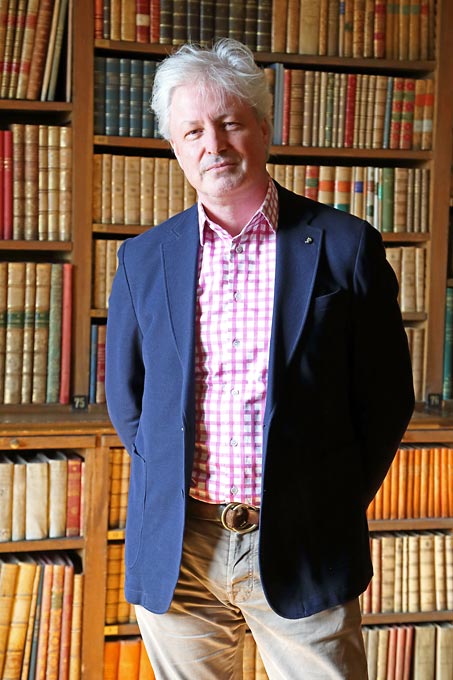
– The European Society for the History of Photography (ESHPh) was established in 1978 with the aim of researching the historical development of photography from its origins up to the present and integrate that in a worldwide context. The founding took place at the first General Assembly held in Leverkusen (Germany) on 19 November 1978.
This event was preceded by a preliminary meeting held on 15 and 16 December 1977 at the Sterckshof Museum in Deurne near Antwerp, to discuss the possibility of establishing a European society of photography. Laurent Roosens (Head of the Scientific Documentation and Information Section of Agfa-Gaevert n.v. Mortsel/Antwerp) was one of the most important initiators and masterminds behind the foundation of the ESHPh. He became the first president of the Society and led it – together with Roger Coenen (Curator of the Film and Photo Section of the Sterckshof Museum, Antwerp) in the role of General Secretary – until 1986. The headquarters moved from Antwerp (1978–1989) to Croydon/Sussex (1989–2001) and has been in Vienna since 2001.
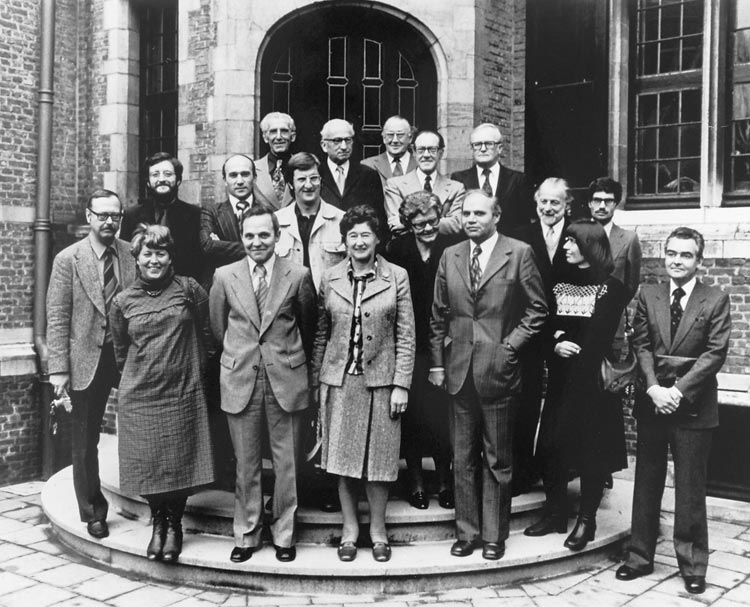
From the very beginning, the Society saw itself as an open platform on interdisciplinary photographic research without any geographical borders. That appealed to many of the leading curators from the main museums of the period, as well as parties from the most varied spheres with an interest in photography. The founding members included many personalities who are still renowned today: Colin Ford (National Portrait Gallery, London), Hans Frank (Photogeschichtliche Sammlung Frank, Bad Ischl), Margaret Harker (Royal Photographic Society, London), Rune Hassner (Photographer, Stockholm), André Jammes (Collector of photographs & rare books, Paris), Rolf H. Krauss (Deutsche Gesellschaft für Photographie, Cologne), etc.
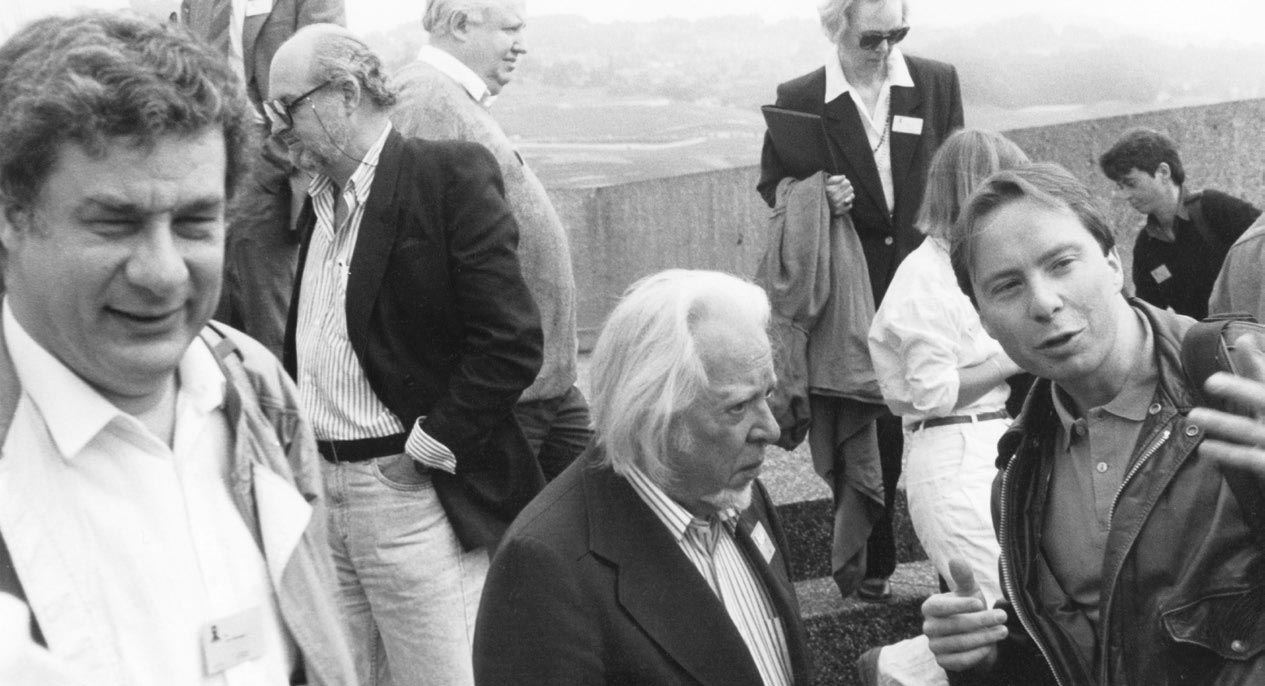
What areas did the ESHPh focus on in the early years?
– The ESHPh was very much a child of its time. In the mid-1970s, European museums and archives began increasing their photo collecting activities, and the first galleries devoted to the medium were established. The auction houses were also on board when the first European symposia on photography were held. In addition to Paris, London, Amsterdam, Antwerp, Hamburg, and Cologne, Vienna – as “most eastern state in the west” during the (political) Cold War – played a not insignificant role. All of these activities created a growing interest in the history of photography, and the ESHPh took on the role of providing photo research with a transregional, intellectual platform.
A particularly important aspect of this was issuing publications. At the first General Assembly, a decision was made to establish a kind of publication that had not previously existed in this form that, as the reference organ of the ESHPh, would issue summaries of important contributions to the relevant specialised literature. This led to the publication of “photohistorica”, which was edited by R. Derek Wood for many years and issued from May 1978 to June 1997.
Has the focus changed and evolved over the years? If so, how?
– Little by little, the Society adapted to the demands of the changing times. Beginning in 1981, the ESHPh organised international symposia that were held, on a yearly basis, at various locations in Europe. These symposia, which usually lasted several days, took place in cities with important museums and research institutions, and had a major influence in promoting the discourse taking place within the rapidly growing community. This also provided a tremendous impulse for the growth of the Society: Persons as important as Helmut Gernsheim, Michael Gray, A.D. Coleman, Margaret Florence Harker, Larry J. Schaaf, Peter Weiermair, Roger Taylor, Miguel and Anna Galmes, Jean Dieuzaide, Guiliana Scimé took part and became members. One of the largest ESHPh symposia was held in Vevey in 1989 on the occasion of “150 Years Jubilee of the Invention of Photography”. More than 50 presentations were given to the numerous participants of this meeting that lasted several days. More information can be found at: http: www.eshph.org/symposium/category/1989-veveych/.
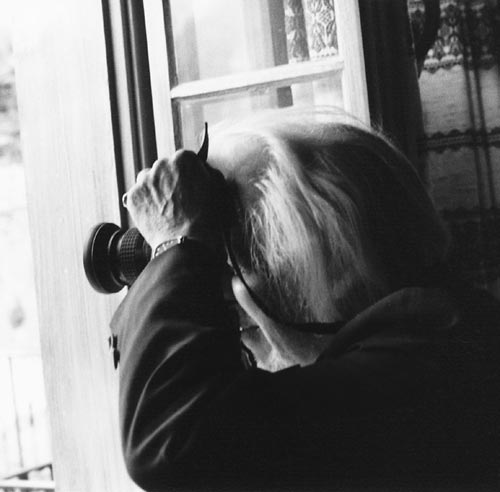
“PhotoResearcher” was introduced as the new “written mouthpiece” of the Society in 1990. This photo-historical journal now became the forum for publishing selected contributions to congresses and essays; especially by members of the Society. “photohistorica” had lost much of its significance and publication ceased in 1997. PhotoResearcher was originally published at irregular intervals. However, economic and structural restraints meant that it had to be discontinued in the years between 1997 and 2004 before being issued periodically after 2004 during Anna Auer’s presidency.
When did you join the team?
– My first contact with the ESHPh was around the year 2000; and it was through Anna Auer. She asked me if the Austrian National Library would be interested in jointly organising the 18th International Symposium of the ESHPh. We soon reached a decision, and the answer was an enthusiastic YES!
It was an ideal time. My research on the collection of 18th century graphic art of the Zurich Pastor Johann Caspar Lavater had come to an end, and the preparations for the exhibition, which was to be held in the State Hall of the Austrian National Library (1999) and then in the Kunsthaus Zurich (2001), and catalogue were on track. After that, my new field of research was photography. I had just begun to prepare a comprehensive exhibition on the historical photo collection from the holdings of the Austrian National Library. This opened with the title of “Im Blickpunkt” (In Focus) in 2002 and is now regarded as the first presentation of the library’s photo-historical collection.
I felt that the ESHPh would be an ideal partner to enable the Austrian National Library to dock onto the international photo community and the new General Manager supported this initiative. The ESHPh congress “Photography and Research in Austria – Vienna, the Door to the European East” (20 to 22 June 2001) was a complete success, and Anna Auer was elected the new President of the ESHPh immediately thereafter. Then everything happened very quickly. I became ESHPh member and in 2004 the ESHPh asked me to take on the function of vice-president that – knowing of the great personalities and the history of this Society – I accepted with deep respect.
How did you come to be elected President? And what were the innovations you planned?
– Anna Auer placed great trust in me from the start. It was very courageous of her to nominate me, as a newcomer, for the office of Vice-President. In just a short time, we developed into a highly effective team: Anna had done pioneering work for many years as one of the first photo gallerists in Europe (Die Brücke, Vienna), and as the founding director of the Fotografis Collection http://www.eshph.org/blog/2015/12/05/die-bruecke/, as well as through her many publications and work as a curator of exhibitions. At the same time, she had been a member of the Society for many years and was fully aware of how it functioned internally. I was able to support her with my experience in the conception and execution of research projects, exhibitions, and publications. My institutional activity at one of the largest photo archives in Austria, that of the National Library in Vienna, and my teaching assignment as a senior lecturer at the University for Continuing Education Krems/ Center of Image Science https://www.donau-uni.ac.at/en.html offered many advantageous synergies.
Before long, we had successfully consolidated the Society’s financial situation, developed efficient administrative structures for the rapidly growing ESHPh, and created legal status for the Society as an international organisation with statutes and financial supervision in keeping with Austrian Association Law of 2004.
A milestone in the Society’s position as an international research institution was reached with the three-day Congress “Jubilee – 30 Years ESHPh”, which was held in the rooms of the Austrian Academy of Sciences (ÖAW) in September 2008. Many participants were also very favourably impressed by the 528-page volume with essays contributed by 44 authors http://www.eshph.org/symposium/2015/11/17/2008-viennaat/#more-77. It was exemplary – and something of a novelty – that these proceedings were already made available at the beginning of the congress. The symposium was a major success on all levels, and that at the time when the serious economic crisis of 2008 was starting to make itself felt.
Together with Anna, I was responsible for the overall concept of the symposium and the publication. I was elected President of the ESHPh two years later. And I had tremendous backing: Anna Auer handed over an ESHPh that was in an outstanding financial and administrative condition so that I was able to immediately devote myself to substantial matters and set new accents.
What has the ESHPh been working on recently?
– From the earliest days of my presidency in 2010, it was clear to me that the founding principle of the ESHPh as a transnational platform for promoting and spreading photography in the sense of an interdisciplinary research community needed to be reconsidered. A decisive factor was the development taking place in the areas of digital communication and knowledge transfer, and it became increasingly apparent that what was not online did not exist.
I proposed the following concept for a three-pillar strategy and the Society agreed to its implementation:
First: The ESHPh is a research forum, primarily represented by the publication of the PhotoResearcher journal.
Second: The ESHPh is a site of scientific exchange through periodically conceived and conducted ESHPh congresses held in cooperation with selected partners, and
Third: The ESHPh is an information exchange as shown in many activities including “The International Letter” (spring, summer, and autumn).
Today, the main focus is placed on editing and publishing the renowned PhotoResearcher journal that appears in print in April and October every year. Each PhotoResearcher is conceived as a special issue dealing with current topics of interest in the spheres of historical and contemporary photography. For license reasons and the resulting prohibitive costs, only individual essays are available online and can be ordered for a small fee of ten euros each.
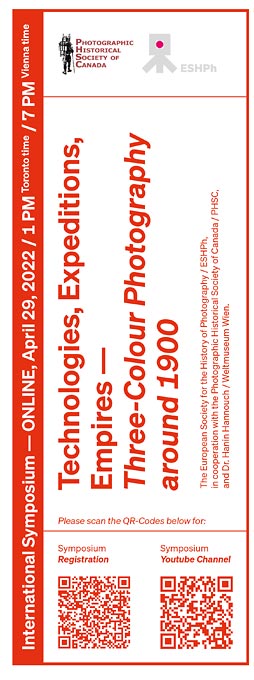
The most recent issue – number 37 – investigates the three-colour theory of the period around 1900. This subject is of particular interest today because it is the only analogue colour process capable of producing digital reconstructions that are true to the original. This is an aspect that is being paid increasing attention to in modern photographic art. At the same time, we are organising an online seminar – in cooperation with the Photographic Historical society of Canada (PHSC) and the guest editor Hanin Hannouch – that will be available, free of charge, to registered participants from around the world.
The pandemic has made us learn how to think and communicate differently and we are therefore realising this model in the form of an expanded discussion forum for the first time. At the start of the online symposium, the eight contributions to PhotoResearcher will be used to introduce the subject and open the discourse that will also explore the impact of this colour photography in the present day. The results of this symposium will be archived over YouTube. We see this strategy as a model for an active and democratic transfer of knowledge similar to that taking place on a wide variety of blogs.
The next two editions of PhotoResearcher – number 38 will be issued in October 2022, followed by number 39 in April 2023 – will make a close study of specific aspects of the photobook. Here, we are also planning accompanying programmes to appeal to a broader circle of interested people.
The ESHPh also organises symposia and exhibitions.
– Symposia are another of our fields of activity. We don’t follow the principle of a “call for papers” that is often usual for congresses; we have chosen a different strategy. It all begins with the print edition of PhotoResearcher. If we find a cooperation partner for a symposium related to the content during production of the journal, we realise it. We have made the experience that symposia of this kind lead to an especially profound discourse between the lecturers and participants.
We see a close interplay between PhotoResearcher and symposia. Exhibitions conceived by the ESHPh are also part of this generation of synergies, but this is rarely the case. This option came up in connection with PhotoResearcher number 28 “The City and the Territory – Imagining Cairo and Egypt”, which was published in 2017 in cooperation with the Austrian Cultural Forum in Cairo, the Embassy of Switzerland in Egypt, and the Bayt al Sennari/Bibliotheca Alexandrina in Cairo.
The exhibition opening in the Bayt al Sennari, which is a branch of the Bibliotheca Alexandrina, was followed by a roundtable discussion on “colonial exoticism and romanticising orientalism”.
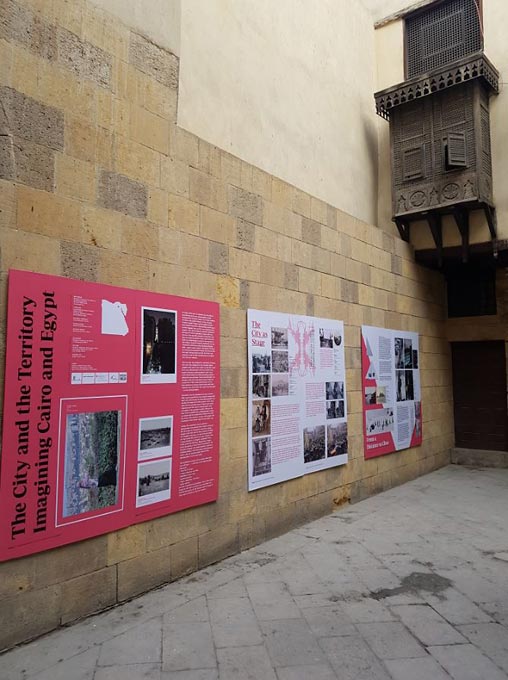
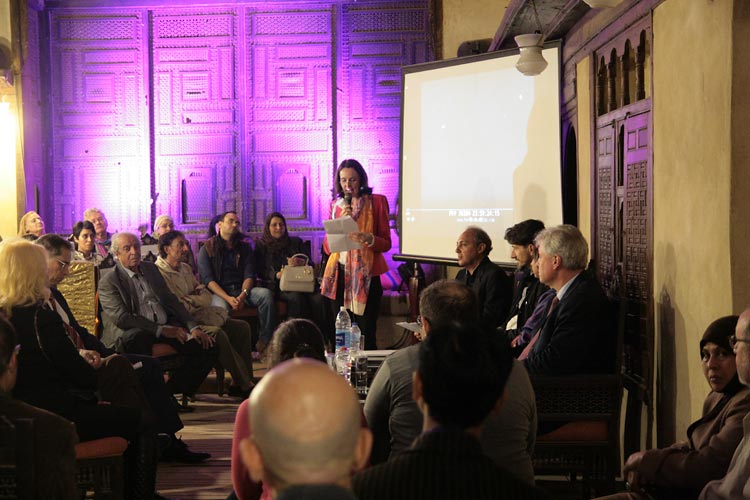
PhotoResearcher was founded in 1990. How has it evolved over the years?
– In the early years, its function was mainly to present the proceedings of the annual congresses. It only appeared at irregular intervals. While Anna Auer was president, it was published regularly – once a year. The editorial collaboration with Alistair Crawford functioned exceptionally well, and the wide variety of essays presented were predominantly the work of the members. These early issues can be accessed, free of charge, at eshph.org.
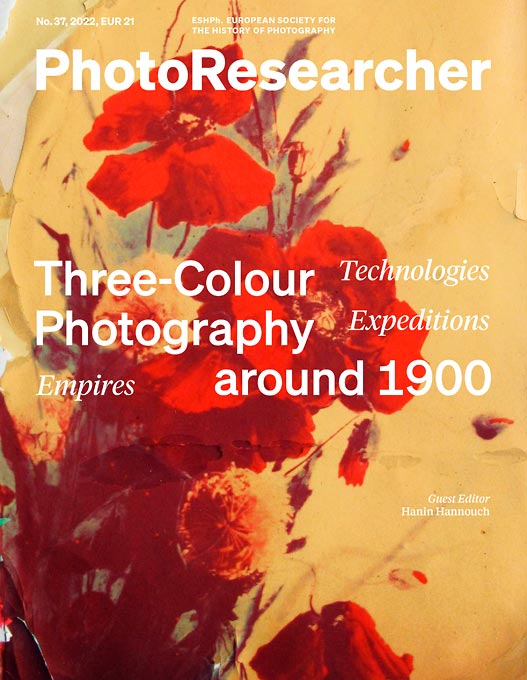
The year 2010 marked a major turning point for PhotoResearcher. As soon as I became president, I realised that PhotoResearcher had to be the calling card of the ESHPh and have a high level of scientific excellence. Starting from then, PhotoResearcher has been published twice a year, in April and October, and that, always as a special issue on a specific topic. The principle of the guest editor was introduced with number 15 in 2011. This is still the way we operate today, and it should be seen as an alternative model to peer-reviewed journals. As a result, PhotoResearcher was no longer simply the journal of the Society. The first guest editors included Luke Gartlan (number 15/2011: Photography in East Asia), and Harald Stühlinger (number 18/2012) and they were not members of the ESHPh at that time. During the same period, in 2010, the photographic artist and teacher at the Academy of Fine Arts in Vienna, Thomas Freiler, created a new, modern design for the publication (there had been something of a pre-run with number 12 in 2009). His work is now being carried on by a member of the younger generation of artists, Sophie Thun.
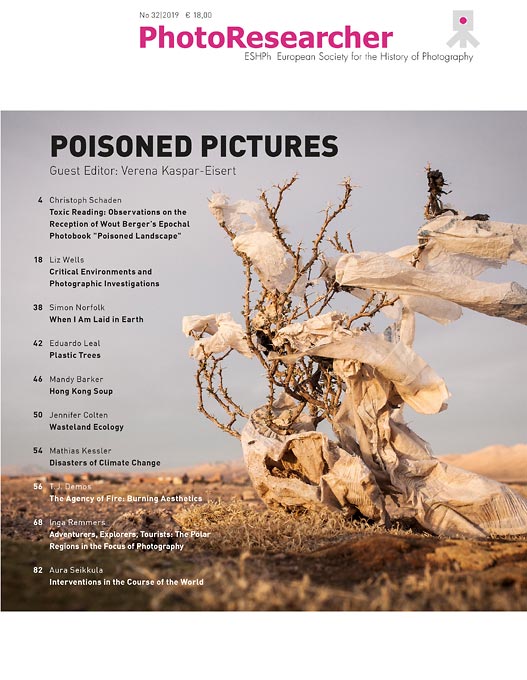
The attempt made in the middle of the second decade of this millennium to have PhotoResearcher only appear online was widely rejected by the readers and subscribers. As a consequence, the print quality was increased even more, and the layout relaunched. PhotoResearcher currently appears with eight to twelve contributions in each issue and, compared with the year 2010, the number of pages has now doubled to around 144 printed pages. Today, PhotoResearcher generally finds its way to its readers by way of the institutional and private members of the Society, as well as over commercial channels.
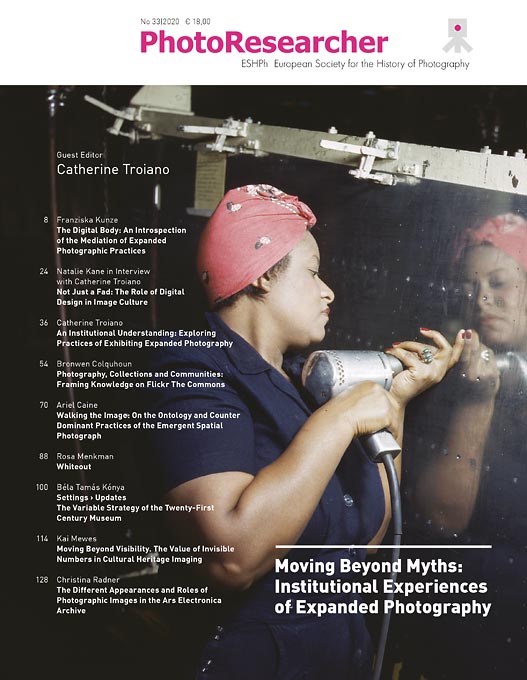
And what is its reach? Nationally and internationally?
– We have an international audience; most of our subscribers and readers are in Europe, but the USA is also strongly represented. The “European” in our name is not meant to indicate a national orientation in our photographic research activities. It is much more the case that we devote ourselves to topics that have primarily developed in Europe and investigate them against an international background. In recent times, we have published special issues dealing with European subjects in the global context; for example, European colonialism (No 30/2018: Photographs in Motion. Circulating Images of Asia around 1900, guest editor: Sophie Junge). Or we focus on topics that deal with European phenomena from multiple perspectives in the form of an outside view (No 23/2021: „I am shocked!“ The Reception of Photobooks, guest editors: Christoph und Markus Schaden; No 37/2022: Three-Colour Photography around1900 – Technologies, Expeditions, Empires, guest editor: Hanin Hannouch).
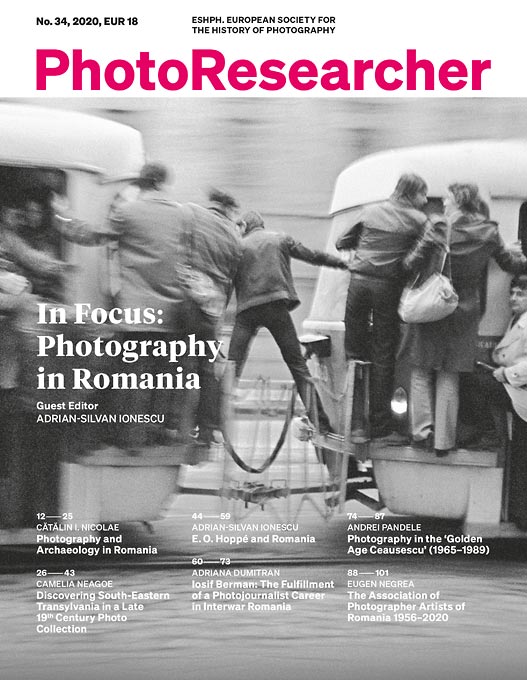
The planned special issues on photobooks will also follow this path (number 38/2022: “Photobooks as Propaganda: A Platform for Power, Protest and Persuasion, guest editor: Jose Neves). Special issues on the history of photography in Spain, and the one on “Photography in Romania” (number 34/2020) were the exception and were intended to open innovative approaches and interpretations based on the independent (socio-)political developments in these countries in the 20th century.
How would you describe your work as its editor?
– The function of the editor of a specific scientific journal is challenging, but – at the same time – it is also a highly satisfying activity, especially when the first feedbacks to an issue start coming in. In spite of all the routine, the process of producing each number is never identical. This is due to the fact that the concept of the special numbers is so varied, and the cultural backgrounds and working styles of the individual guest authors is also so refreshingly different. As editor of the journal, I work very closely with my co-editor Ulla Fischer-Westhauser (who is also Vice-President of the ESHPh); Ulla is chiefly responsible for the coordination and technical aspects of the editing.
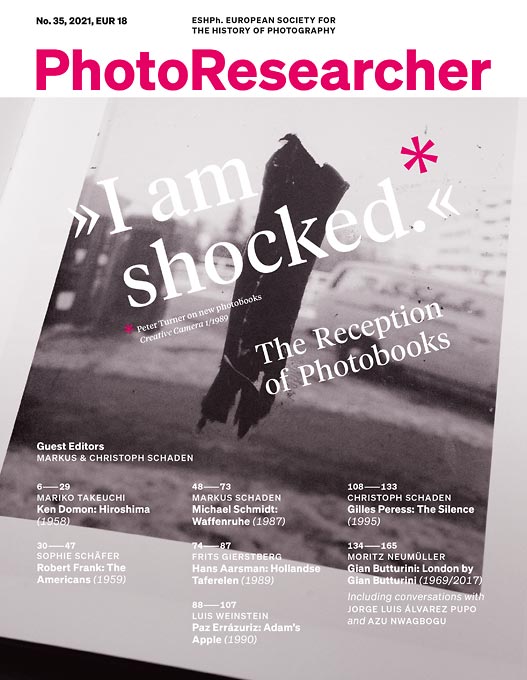
The issues are planned from 1.5 to 2 years in advance. The guest editors approach the ESHPh of their own accord with suggestions for topics, or we – as the editors – contact them directly if we have a specific subject in mind. The ESHPh’s extensive network provides great support in this area, as does or highly-experienced Advisory Board.
The selection of the guest editors takes place in an open application system. The criteria are clearly defined: acknowledged expertise and extensive publication activity in the specific subject, and an international network. This is a matter of course today, but these factors play a decisive role seeing that the selection of the authors, as well as the responsibility for the content of the specific issue, lies in the hands of the guest editor. We give priority to up-and-coming guest editors who have reached the middle of their careers, but do not neglect the generation of their teachers. Membership in the Society is not important, and the guest editors often only join the ESHPh after they have completed their assignment.
The editorial supervision and monitoring of the production process of the graphic design, printing, and distribution, however, remains under the control of the editors.
The photography world has changed a lot since the ESHPh was founded. Has this reflected on its work?
– Naturally, I always have to ask myself how the idea behind the foundation of the ESHPh of providing a transnational forum to promote and disseminate photography in the sense of interdisciplinary research has remained relevant to the present day. Faced with the dynamics of today’s digital communication and transfer of knowledge, is this premise still viable and affordable? And if it is, which means, and methods are most efficient?
I feel that it is extremely difficult to find a definitive answer to these questions. Above all, the recent effects of the pandemic, and the war that is raging not far from Vienna in Central Europe and causing so much suffering, have rapidly revealed the short lifespan and fragility of functioning systems. Nevertheless, the sales of the PhotoResearcher, and our permanently increasing number of members have shown us that the path we set out on more than ten years ago has borne fruit. It appears that qualified photographic research in the “classical” combination of publishing a journal and organising symposia, together with a strong link of digital presence and communication, continues to be effective on the international level.
Membership of the ESHPh plays an especially significant role both as a means of financial and structural support, and substantial expertise. Seeing that my activity, as well as that of our Board, takes place on a voluntary basis, this – together with the financial support we receive from other sources – is essential to permit us to continue to act independently in the substance of our work. We have noticed that, in today’s age of visual culture, complete with the mass circulation of photographic images on demand, the desire to be able to obtain well-founded information and discussions on this matter is exceptionally large. And that makes it possible for us to look towards the future with great confidence.
